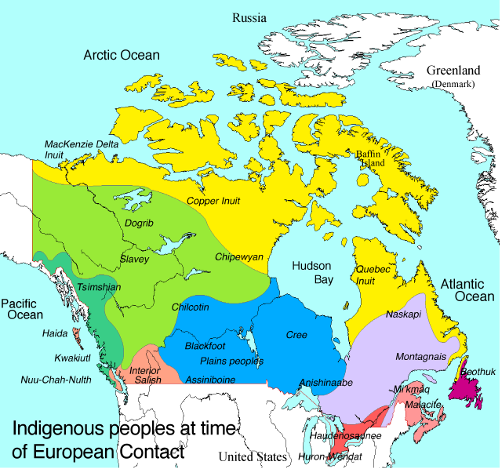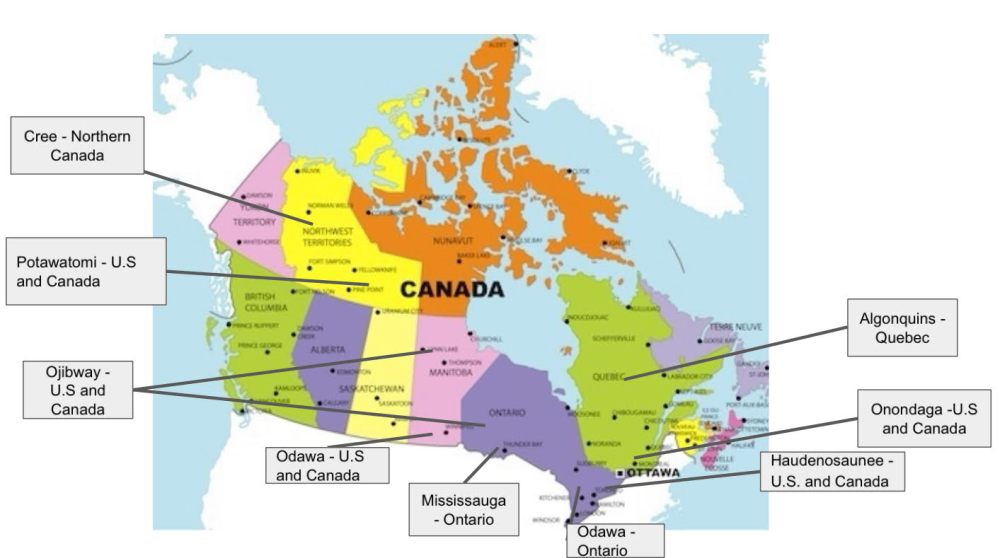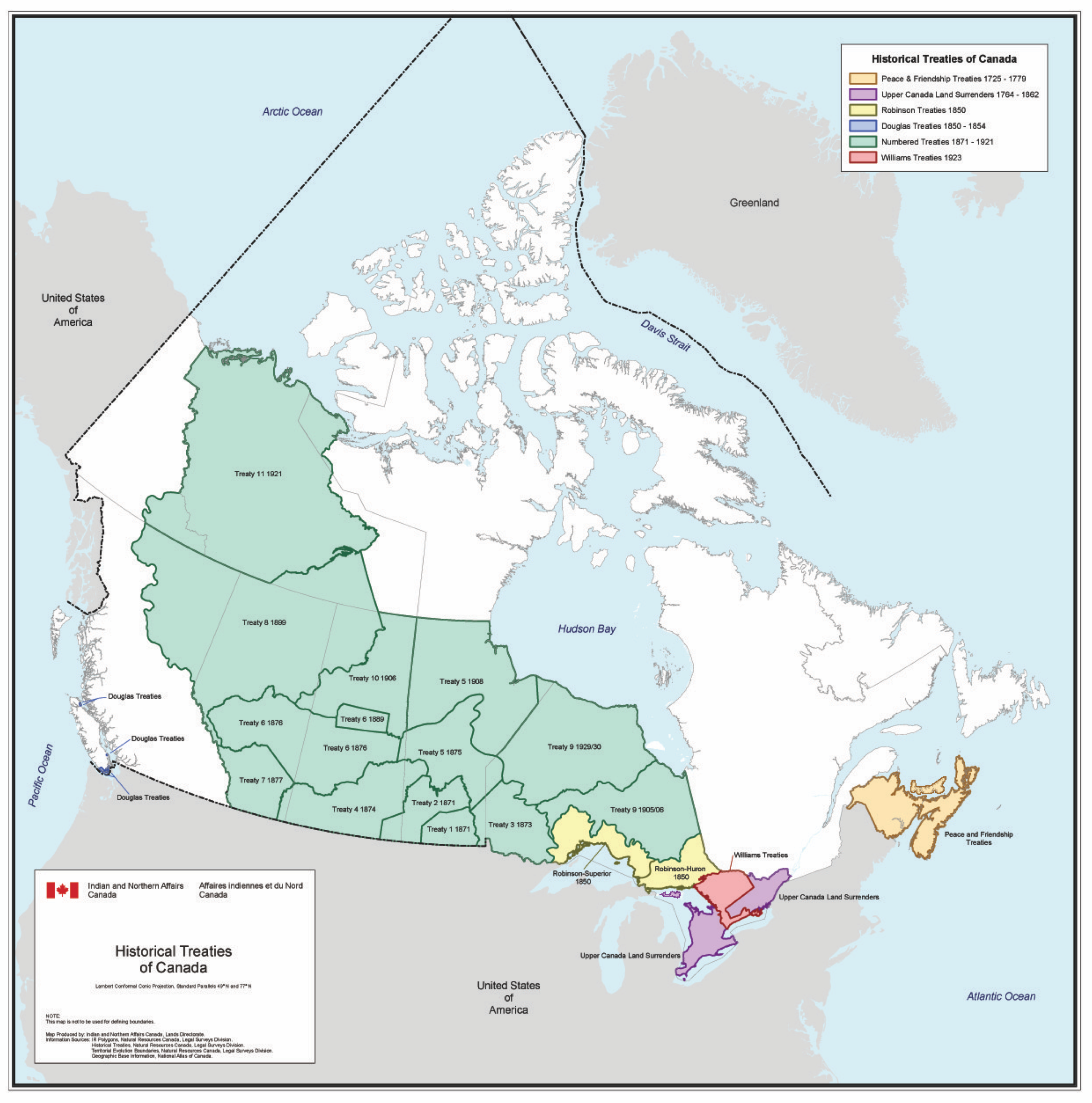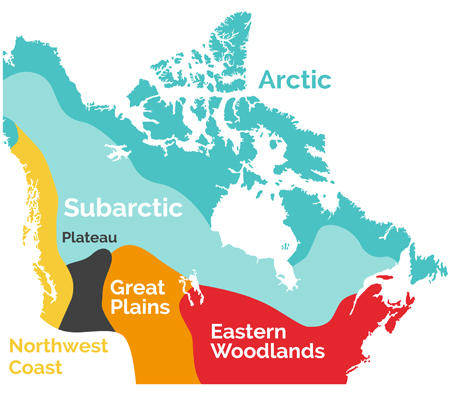Unveiling the Tapestry of Indigenous Canada: A Comprehensive Guide to Native Tribes and Their Territories
Unveiling the Tapestry of Indigenous Canada: A Comprehensive Guide to Native Tribes and Their Territories

Canada’s vast and diverse landscape is home to a rich tapestry of Indigenous cultures, each with its own unique history, traditions, and languages. Understanding the geographical distribution of these First Nations, Métis, and Inuit peoples is crucial to appreciating the complexities of Canada’s past, present, and future. This comprehensive guide will delve into the intricate map of Indigenous territories in Canada, offering insights into their historical significance, contemporary challenges, and the ongoing journey towards reconciliation.
A Historical Overview of Indigenous Territories
Related Articles: Unveiling the Tapestry of Indigenous Canada: A Comprehensive Guide to Native Tribes and Their Territories
- Unveiling the Mystical Symbolism: Turtle Shell Meaning
- Unveiling Megan Fox’s Native American Roots: Revealing Her Ancestry!
- Discover Charming Chippewa, IL: A Hidden Gem of the Midwest!
- Unveiling the Enchanting World of Native American Symbols: Discover Their Hidden Meanings
- Unveiling the Sacred Beliefs: A Journey into the Cherokee’s Spiritual Tapestry
Before European colonization, Indigenous peoples inhabited every corner of what is now Canada, their territories stretching from the Arctic Ocean to the Pacific Coast. Their presence predates European arrival by millennia, with evidence of human settlements dating back to at least 10,000 years. These Indigenous nations developed intricate systems of governance, land management, and cultural practices that were deeply intertwined with their environments.
The arrival of European colonists in the 15th century marked a turning point in the history of Indigenous peoples in Canada. European expansion brought with it disease, displacement, and the imposition of foreign laws and values. Treaties were signed, often under duress, that ceded vast tracts of land to the Crown, leading to the establishment of reserves and the erosion of Indigenous sovereignty.
Navigating the Map of Indigenous Territories
Understanding the geographical distribution of Indigenous territories in Canada requires recognizing the distinct identities of First Nations, Métis, and Inuit peoples.
-
First Nations are the original inhabitants of Canada, with a diverse array of languages, cultures, and traditions. They are often associated with specific geographic regions and are organized into distinct nations or bands.
-
Métis are a distinct Indigenous people who emerged from the historical intermarriage between Indigenous and European peoples, primarily in the prairies and northern regions. Their unique identity and culture blend aspects of both First Nations and European traditions.
-
Inuit are the Indigenous peoples of the Arctic region, spanning across northern Canada, Greenland, and Alaska. They are known for their resilience, adaptation to harsh environments, and their rich cultural heritage.


Exploring the Diversity of Indigenous Nations
Canada’s Indigenous map is a testament to the extraordinary diversity of these peoples. Each First Nation, Métis community, and Inuit group possesses its own unique history, language, and cultural practices. Some notable examples include:
-
Haida Nation: Located on Haida Gwaii (Queen Charlotte Islands) off the coast of British Columbia, the Haida are known for their intricate art, traditional longhouses, and their deep connection to the sea.
-
Cree Nation: The Cree people inhabit a vast territory across central and northern Canada, from the Rocky Mountains to the Atlantic coast. They are renowned for their resilience, adaptability, and their strong connection to the land.
-
Innu Nation: The Innu are the Indigenous peoples of the boreal forest region of eastern Canada, primarily in Labrador and Quebec. They are known for their nomadic lifestyle, their traditional hunting and fishing practices, and their unique language and cultural traditions.

Contemporary Challenges and Opportunities
While Indigenous peoples in Canada have made significant strides in asserting their rights and reclaiming their cultural heritage, they continue to face numerous challenges. These include:
-
Economic Disparities: Indigenous communities in Canada experience disproportionately high rates of poverty, unemployment, and lack of access to essential services.
-
Health Inequities: Indigenous peoples are significantly more likely to experience health problems such as diabetes, heart disease, and mental health issues.
-
Environmental Concerns: Indigenous communities are often on the frontlines of environmental issues, facing the impacts of climate change, resource extraction, and pollution.
-
Reconciliation: The journey towards reconciliation between Indigenous peoples and the Canadian government is a complex and ongoing process. It requires addressing historical injustices, promoting cultural revitalization, and ensuring meaningful participation in decision-making processes.
The Path Forward: Reconciliation and Self-Determination
Reconciliation and self-determination are essential for the well-being of Indigenous peoples in Canada. This involves:
-
Honoring Treaties: Upholding the spirit and intent of treaties signed between Indigenous nations and the Crown.
-
Self-Governance: Supporting Indigenous communities in exercising their inherent right to self-governance and control over their lands, resources, and cultural practices.
-
Cultural Revitalization: Fostering the revitalization and preservation of Indigenous languages, traditions, and cultural expressions.
-
Economic Development: Supporting Indigenous-led economic development initiatives that promote self-sufficiency and sustainable livelihoods.
Conclusion
The map of Indigenous territories in Canada is a powerful testament to the resilience, diversity, and enduring spirit of these First Nations, Métis, and Inuit peoples. Their history, culture, and ongoing struggles offer valuable lessons for all Canadians. By acknowledging the complexities of their experiences, embracing their contributions to Canadian society, and working towards reconciliation and self-determination, we can build a future where all Canadians can thrive.
FAQ about Native Tribes in Canada Map
1. What are the different types of Indigenous peoples in Canada?
Canada is home to three distinct Indigenous groups: First Nations, Métis, and Inuit. Each group has its own unique history, culture, and language.
2. How many Indigenous nations are there in Canada?
There are over 600 recognized First Nations in Canada, each with its own distinct territory and governance structure.
3. What is the significance of treaties in Canada?
Treaties are historical agreements between Indigenous nations and the Crown that established certain rights and responsibilities. However, these treaties have often been misinterpreted and violated, leading to ongoing injustices.
4. How can I learn more about Indigenous cultures in Canada?
There are many resources available to learn about Indigenous cultures, including museums, websites, books, and educational institutions. You can also engage with Indigenous communities directly through cultural events and workshops.
5. What can I do to support reconciliation with Indigenous peoples?
You can support reconciliation by educating yourself about Indigenous history and culture, advocating for Indigenous rights, and supporting Indigenous-led initiatives.

Closure
Thus, we hope this article has provided valuable insights into Unveiling the Tapestry of Indigenous Canada: A Comprehensive Guide to Native Tribes and Their Territories. We hope you find this article informative and beneficial. See you in our next article!